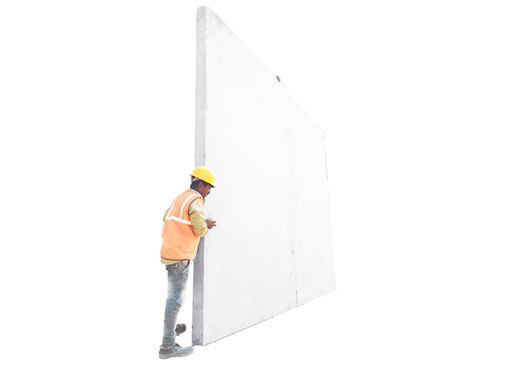Wall Panel
Precast wall panels can be used as cladding, load bearing or shear walls. They offer thermal resistance, moisture protection, fire safety and better acoustics. They are quick and easy to install and provide an excellent finish, eliminating the need for plastering. Additional openings for doors, windows, ventilators and more can be incorporated as required.
Design
Designs are dependent on project specifications and applications.

Manufacturing Method
Arto wall panels are cast using concrete with a low w/c ratio; it is poured into steel mechanized equipment called precast molds. Rebar is preplaced and secured inside the mould. Form vibrators are used to consolidate concrete to attain homogeneity and release any trapped air. Hole formers may be incorporated, or coring and cutting is done if needed. The product is then stripped and the mould is reused. FRP sheets are used along with the mould to create customised patterns based on the customers’ requirements.
At every stage meticulous testing is done to maintain quality. Every concrete batch undergoes cube testing to ensure strength parameters are met along with slump testing to ensure consistence in the mix design. After demoulding the product goes through visual inspection to ensure no honey-combing, voids or cracks are present. In case any test fails the batch will be rejected.
- Bolted connections: The bolted connections are a simplified and fastest method of erection operation. The final alignment and adjustment can be made on site.
- Welded Connections: The connections are made by placing a loose plate between two structural steel plates that are embedded both in the cast-in-place or the precast concrete panel and welded together.
- Dowel Connections: A dowel joint is a steel joint that is partially or totally held in place by the addition of small round steel rods, which are then grouted in on site.

